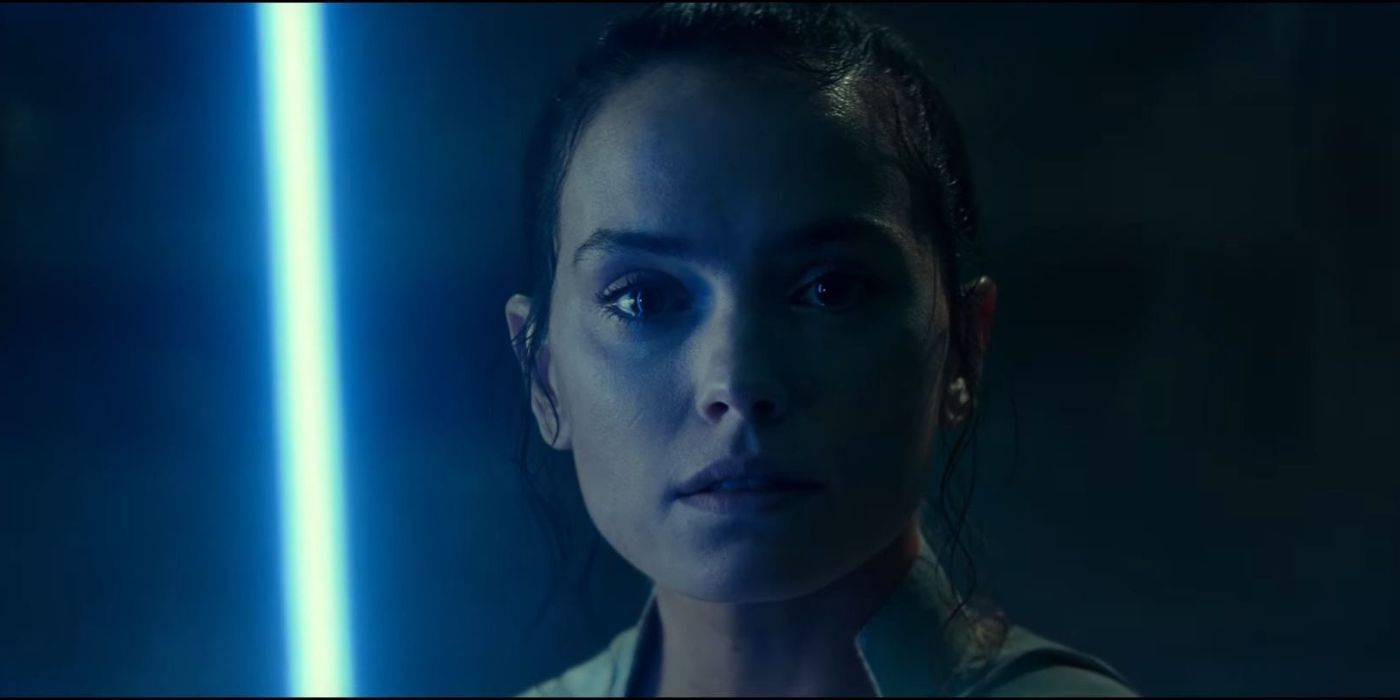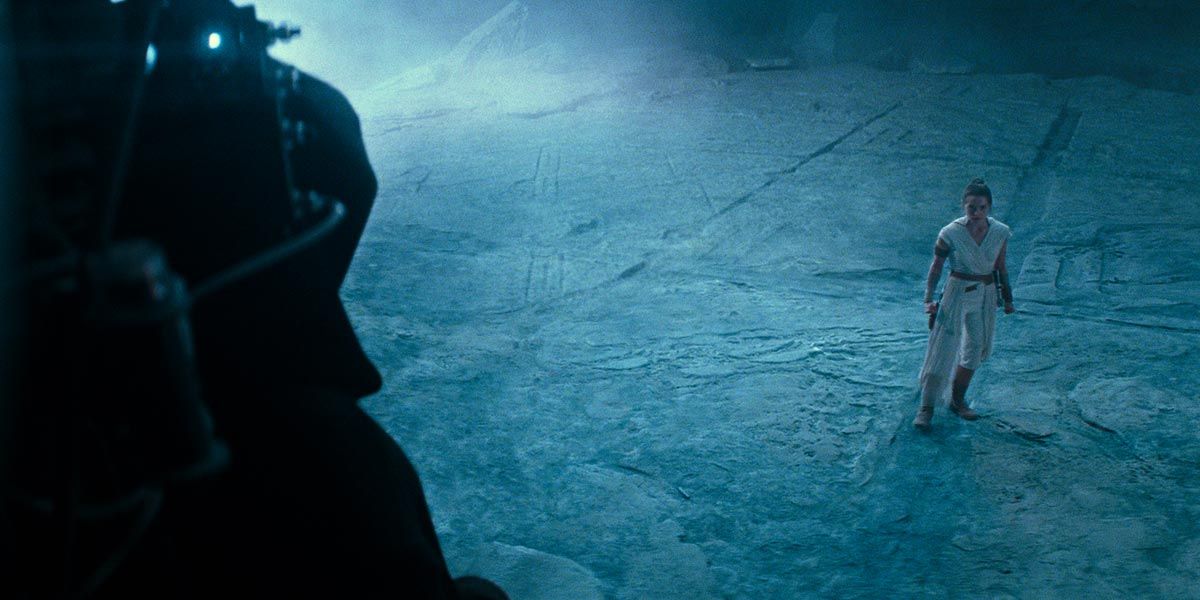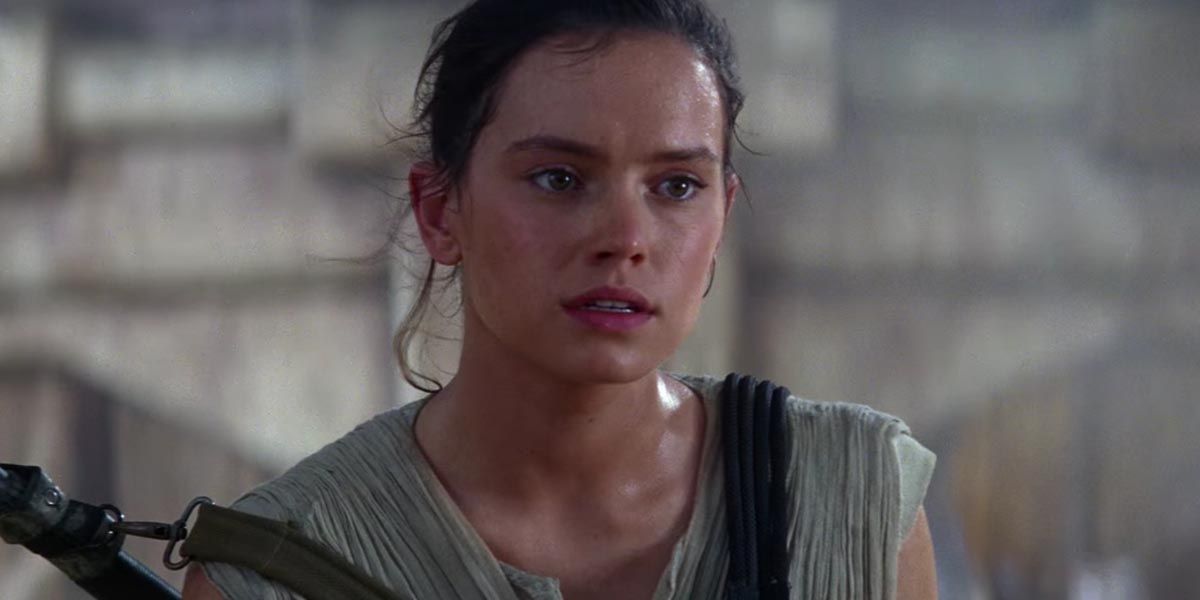WARNING: The following article contains major spoilers for Star Wars: The Rise of Skywalker, in theaters now.
The Rise of Skywalker is proving to be almost -- or maybe equally -- as divisive among critics as The Last Jedi is amongst the Star Wars fandom. While a thrilling joyride in its pacing and scope, the film is dragged back down to earth with the introduction of a major revelation: Rey is Palpatine's granddaughter.
As it turns out, the Emperor, who returns to the franchise in Episode IX after a decades-long absence of being supposedly dead, also secretly (and ickily) had a blood lineage. Rey's parents abandoned her on Jakku in the hopes of hiding their daughter away from him and died at the hands of an assassin sent by Palpatine while protecting her whereabouts. Prior to this, the only real clue we had of Rey's connection to the Sith Lord came when Rey, pushing her powers to the maximum, accidentally emitted a blast of Force lightning at a transporter that she believed Chewie was being held captive on. Though not exclusive to the Emperor, Force lightning is a Dark Side ability that's synonymous with him.
In retrospect, there's also the fact that she was drawn to the Dark Side-rich underbelly of the First Jedi Temple on Ahch-To in The Last Jedi -- the same underbelly that seemed, at the time, to confirm that there was nothing more to her than her own reflection staring back at her. However, at that point, it was a long walk between feeling a connection to the Dark Side and being a secret Palpatine family member, despite the many grasping-at-straws fan theories to the contrary. If anything, all this did was made Rey seem like an excitingly nuanced heroine for an exciting new direction in the series.
If the reveal feels retrofitted into The Rise of Skywalker, it's because it is: Colin Trevorrow, the original director tapped to helm the ninth and final film in the Skywalker Saga had no plans to resurrect the Emperor. Though many fans felt unsatisfied by it, The Last Jedi had already closed the book on the riddle of Rey's identity; an answer that may have been construed as a misdirect had it not been thematically cemented by the film's optimistic and franchise-progressing message -- that anyone from any walk of life can use the Force, no matter how "nothing" their origins are. In repealing writer/director Rian Johnson's intent with Episode VIII, The Rise of Skywalker writers, J.J Abrams and Colin Terrio, land the follow-up bumpily in terrain that might be nostalgic but feels light years away from where its two direct predecessors were headed. It's akin to a murder mystery writer only deciding on who the murderer is in the final chapter of their book, giving the reader no chance of ever fairly putting the pieces together for themselves.
What's worse is that the film itself proves that it didn't need this clunky insertion for its story to function. The endgame for the Emperor involves a suitably supernatural process ripped, in part, from areas of the Expanded Universe: the transference of his faltering life essence into Rey, transforming her into the new Sith Empress. However, when this fails to work, the Emperor simply switches tactics, taking advantage of Ben Solo -- who renounced his Kylo Ren identity for good -- as he arrives to help Rey, by way of his and Rey's strong Force bond. Through the bond, he's able to suck both of their essences at once, negating the need for him to need a new vessel as their energy restores him to some of his former vampiric glory. It also seems far more in-keeping with the character's vanity and arrogance that he'd prefer to sit on his throne forever rather than relinquish it -- even to someone of his own bloodline.
It's particularly odd that this wasn't his plan from the beginning of the film given that we also find out, in the exposition-laden opening, that Snoke was merely one of the Emperor's many clones, installed as a puppet leader of the First Order and giving Palpatine a chance to corrupt and train Ben Solo from afar. This reveal, unlike the one concerning Rey, works perfectly fine as Snoke already bears some strong resemblance to Palpatine's deformed appearance and was snuffed-out surprisingly quickly. Snoke -- who was actually being controlled by Palpatine -- was the one who forged the link between Kylo Ren and Rey in the first place, so he knew it was something he could use.
There's also the wrinkle of how many times the Emperor tried to have Rey killed, first by an assassin when she was a child and then multiple times by Kylo Ren, including during this film. Only Leia's intervention through the Force prevented Kylo from actually going through with it during his fight with Rey in the Death Star ruins. It can't have been his plan all along to use his granddaughter as his chosen vessel. Rather, he obviously viewed her as more of a threat to his reign.
It's more likely, and far simpler, that using Kylo Ren as his vessel could and should have been his original plan. Having his apprentice kill his Light Side rival in The Last Jedi was supposed to cement Kylo's allegiance to him. Instead, Kylo betrayed him, forcing the Emperor to take matters into his own, bony hands. Forcing Kylo to keep coming after Rey in a cat-and-mouse chase was perhaps, in the end, a win-win situation for the Emperor: he only needed one new body, after all, and whichever of the two strongest Force-users in the galaxy emerged supreme -- stoking their hatred by killing the other -- would be the right candidate for him. Kylo would either come to him to claim the prize Palpatine had offered him, or Rey would have done it to stop that prize from destroying everything she held dear.
The latter happening, as it does in the film, would have still allowed for that all-important turn from Kylo Ren after Rey heals him, sending him, as Ben Solo to stop her from cutting a deal with Palpatine to spare the Resistance army from being destroyed by his amplified Force lightning.
None of this necessitates a familial connection between Rey and the Emperor. There's nothing that necessitates a powerful Force user having to come from one of two dynasties, either -- just look at Obi-Wan Kenobi, Yoda or the dozens of other incredibly powerful non-Skywalkers and Palpatines that exist in the franchise. All Palpatine's body-hopping plan needed to work was someone strong enough with the Force. The Rise of Skywalker could have played out without the reveal and largely told the same story.
Perhaps the most compelling argument to not make Rey a Palpatine, though, comes from the Emperor himself, and it's a thematic one. When Rey is finally able to fight back against him, deflecting his lightning with the crossed blades of both Luke and Leia's lightsabers (one of the film's many, many visual highpoints), Palpatine voices his shock that a mere "scavenger" girl could best him like this. It's a fantastic, fist-in-the-air reminder of Rey's humble beginnings; of the "nothingness" that she overcame to become the galaxy's hero and (in the end) the last, living representative of all the goodness the Jedi tried to achieve. Unfortunately, it's also completely undercut by the knowledge that she's far from nothing -- she's very much something.
For those that like the idea of a secret Palpatine heir, there's a Star Wars trilogy out in some alternative universe where that particular story could have worked. This trilogy isn't it.
Directed and co-written by J.J. Abrams, Star Wars: The Rise of Skywalker stars Daisy Ridley, Adam Driver, John Boyega, Oscar Isaac, Lupita Nyong’o, Domhnall Gleeson, Kelly Marie Tran, Joonas Suotamo, Billie Lourd, Keri Russell, Anthony Daniels, Mark Hamill, Billy Dee Williams and Carrie Fisher, with Naomi Ackie and Richard E. Grant.



